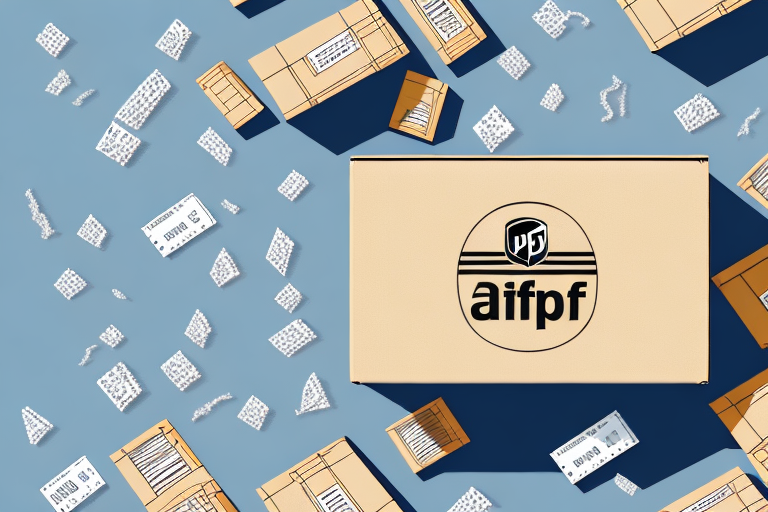Understanding UPS Ground Shipping Box Rates
If you're a business owner or an individual who regularly sends packages through UPS, it's essential to understand the pricing structure behind their ground shipping box rates. These rates are influenced by several factors, including distance, size, weight, and additional fees and surcharges. In this article, we'll delve into the fundamentals of UPS ground shipping box rates, how to calculate them, the factors that affect them, and strategies to save money on shipping costs.
The Basics of UPS Shipping Box Rates
UPS Ground shipping box rates are determined by the package's size, weight, and the distance it travels. The shipping distance is calculated based on the number of miles between the origin and destination cities. Additionally, the size and weight of the package influence the costs associated with packaging materials, shipping, and handling. UPS provides a variety of box sizes and types to accommodate different shipping needs.
UPS also offers a range of additional services that can impact the overall shipping cost, including insurance, signature confirmation, and Saturday delivery. These services enhance the security and convenience of your shipment but come at an extra cost. It's crucial to evaluate whether these services are necessary for your specific shipment and include them in your shipping budget accordingly.
Moreover, UPS provides delivery time guarantees for certain shipping services, such as UPS Next Day Air and UPS 2nd Day Air. If your package does not arrive within the guaranteed timeframe, UPS typically refunds the shipping costs. However, these guarantees are subject to specific terms and conditions, so it's important to review the details before relying on them.
Factors That Affect UPS Ground Shipping Box Rates
Several elements influence UPS Ground shipping box rates, including package dimensions, weight, shape, distance, and the selected shipping speed. UPS Ground shipping typically takes between one to five business days, depending on the distance between the origin and destination.
The dimensions and weight of the package are primary factors affecting shipping costs. Larger and heavier packages incur higher shipping fees due to the increased cost of packaging materials and transportation. Additionally, the shape of the package can influence the shipping rate; irregularly shaped packages may require special handling, leading to additional fees.
Destination is another critical factor. Shipping to a residential address often costs more than shipping to a commercial address due to the complexities involved in residential deliveries. Furthermore, the speed of shipping selected plays a significant role in determining the cost. Expedited options like UPS Next Day Air or UPS 2nd Day Air are more expensive compared to standard ground shipping.
How to Calculate UPS Ground Shipping Box Rates
UPS offers a comprehensive shipping calculator tool on their website, which allows you to estimate UPS Ground shipping box rates accurately. By inputting the package's size, weight, distance, and other relevant details, the calculator provides an estimated shipping cost.
Businesses that frequently use UPS shipping services can benefit from discounts, which can significantly reduce shipping expenses. To access these discounts, businesses should sign up for a UPS account and consider enrolling in their rewards programs. According to UPS's member benefits, these programs offer savings on shipping rates and access to exclusive offers.
Tips for Saving Money on UPS Ground Shipping Box Rates
There are several strategies to minimize UPS Ground shipping box rates:
- Select the appropriate box size: Choose a box that fits your package snugly to reduce shipping costs by minimizing void space.
- Use UPS packaging supplies: Utilizing UPS's packaging materials can qualify you for discounts compared to using third-party supplies.
- Opt for flat-rate boxes or envelopes: These options offer a fixed price regardless of the package's weight, potentially lowering costs.
- Leverage UPS My Choice: This service allows you to manage and consolidate your packages, which can lead to shipping savings.
- Take advantage of volume discounts: Businesses that ship frequently can negotiate better rates with UPS or utilize existing volume discounts.
Additionally, when shipping to nearby locations, consider using UPS SurePost, a hybrid service that combines UPS and USPS delivery systems. This service is often more cost-effective than traditional UPS Ground rates. For international shipments, UPS Worldwide Expedited offers faster delivery times at competitive rates compared to other international shipping options.
Comparing UPS Ground Shipping Box Rates with Other Carriers
To ensure you're obtaining the best shipping rates, it's important to compare UPS Ground box rates with those of other carriers such as FedEx, USPS, and DHL. When evaluating different shipping options, consider factors like delivery time, package size and weight restrictions, and delivery destinations.
Customer service: Assess the level of customer support each carrier provides. Carriers offering superior tracking, communication, and flexible delivery options, such as weekend or evening deliveries, may offer better value depending on your needs.
Package safety and security: For shipping fragile or high-value items, choose a carrier with a reputable track record for safe deliveries. Additionally, review each carrier's insurance options and liability policies to ensure your packages are adequately protected against loss or damage.
According to a Statista report, UPS holds a significant market share in the U.S. ground delivery sector, indicating widespread trust and reliability among consumers and businesses alike.
Understanding the Different Types of UPS Ground Shipping Boxes
UPS offers a variety of box types designed to accommodate different shipping needs. These include regular, flat, telescoping, and side-loading boxes. Common materials used in UPS boxes are corrugated board, chipboard, and plastic, each selected based on the item's protection requirements.
Selecting the appropriate box type is crucial for ensuring your package's safety. Regular boxes are versatile and suitable for most items, while flat boxes are ideal for shipping documents, artwork, or other flat items. Telescoping boxes are adjustable in height, making them perfect for shipping items of varying sizes. Side-loading boxes facilitate the easy loading and unloading of heavy or bulky items, enhancing the efficiency of the shipping process.
How to Choose the Right Size and Type of UPS Ground Shipping Box
Selecting the correct size and type of UPS Ground shipping box is essential for the safe and efficient handling of your package. Here are key considerations to guide your selection:
- Proper fit: Choose a box that snugly fits your package to avoid unnecessary void space or extra weight, both of which can increase shipping costs.
- Package specifications: Consider the weight, size, and fragility of your items when selecting a box type to ensure adequate protection.
- Dimensional guidelines: Ensure that your chosen box complies with UPS's maximum dimensional standards to prevent additional fees.
- Material quality: Opt for durable materials, especially for heavier or more delicate packages, to minimize the risk of damage during transit.
Additionally, consider the destination's environmental conditions. If shipping to areas with extreme temperatures or harsh weather, select a box that can withstand such conditions. For international shipments, ensure that the box meets the specific regulations and requirements of the destination country to avoid delays or additional charges.
What to Know About Dimensional Weight and Its Impact on UPS Ground Shipping Box Rates
Dimensional weight is a pricing technique that considers a package's volume rather than its actual weight to determine shipping costs. UPS uses dimensional weight to optimize space utilization in their delivery vehicles, which can impact your shipping rates.
The dimensional weight is calculated by multiplying the package's length, width, and height and then dividing the result by a dimensional factor. For UPS, the dimensional factor is typically 139 for packages measured in inches. For example, a package measuring 20 inches in length, 15 inches in width, and 10 inches in height would have a dimensional weight of approximately 21.6 pounds (20 x 15 x 10 ÷ 139).
Understanding how dimensional weight affects your shipping costs is crucial to avoid unexpected expenses. By optimizing your package dimensions and minimizing excess space, you can potentially reduce your shipping costs.
The Importance of Proper Packaging for Lowering UPS Ground Shipping Box Rates
Proper packaging plays a vital role in minimizing UPS Ground shipping box rates. Inadequate packaging can lead to damaged goods, increased space usage, or additional handling charges, all of which can escalate shipping costs. Therefore, it's essential to use high-quality and appropriately sized packaging materials when preparing your package for shipment.
Box size: Selecting the right box size is paramount. A box that's too large can result in unnecessary weight and space, increasing shipping costs. Conversely, a box that's too small may cause damage to the contents or require extra padding and materials to secure the items, also adding to the cost.
Protection: Ensure that your items are well-protected within the box. Utilize cushioning materials such as bubble wrap, packing peanuts, or foam inserts to prevent movement and absorb shocks during transit. Securely sealing your package with strong packing tape is also crucial to prevent the box from opening or becoming damaged during shipping.
Implementing these packaging best practices not only safeguards your items but also helps in reducing shipping costs by optimizing package weight and dimensions.
Understanding Additional Fees and Surcharges for UPS Ground Shipping Boxes
When calculating UPS Ground shipping box rates, it's important to account for additional fees and surcharges that may apply. These extra charges can include fees for remote or rural delivery areas, package insurance, delivery confirmation, and handling of hazardous materials.
Residential surcharge: One of the most common additional fees is the residential surcharge, which is applied when the delivery address is a residential location rather than a commercial one. This surcharge covers the extra costs associated with residential deliveries, such as the need for specialized equipment or additional time required for delivery.
Other potential surcharges include:
- Fuel surcharges: Adjust based on fluctuating fuel prices.
- Oversize or overweight fees: For packages exceeding standard size or weight limits.
- Declared value: If you opt for additional insurance beyond the standard coverage.
Understanding these additional fees is essential to accurately estimate your total shipping costs and avoid unexpected expenses.
How to Track Your UPS Ground Shipping Box and Monitor Delivery Times
UPS provides robust package tracking services that allow you to monitor your shipment's progress in real-time. By using the UPS tracking tool, you can receive updates on your package's location, estimated delivery time, and any potential delays. This transparency ensures that you stay informed and can plan accordingly for package arrivals.
Additionally, UPS offers email and text notifications to keep you updated on the status of your delivery. This feature is particularly useful for ensuring that someone is available to receive the package, minimizing the risk of missed deliveries or the need for redelivery attempts.
Best Practices for Managing Your Business's UPS Ground Shipping Box Costs
For businesses that regularly ship packages through UPS Ground, effectively managing shipping costs is crucial for maintaining profitability. Here are some best practices to optimize your UPS Ground shipping box expenses:
- Optimize packaging: Reduce package weight and dimensions by selecting the most appropriate box size and using efficient packaging materials.
- Leverage volume discounts: Utilize UPS's volume discount programs or negotiate rates with UPS based on your shipping volume to lower per-package costs.
- Implement shipping solutions: Adopt shipping software or tools that streamline the shipping process, calculate accurate shipping rates, and automate label printing to reduce errors and save time.
By implementing these strategies, businesses can significantly reduce their UPS Ground shipping costs while maintaining efficient and reliable shipping operations.
Common Mistakes to Avoid When Using UPS Ground Shipping Boxes
Avoiding common mistakes can help you save on shipping costs and ensure the safe delivery of your packages. Here are some pitfalls to watch out for when using UPS Ground shipping boxes:
- Poor handling and packaging: Neglecting proper packaging can lead to damaged goods and increased shipping costs due to the need for replacements or additional handling.
- Incorrect box size selection: Using boxes that are too large or too small can result in higher shipping fees or inadequate protection for your items.
- Ignoring dimensional weight: Failing to account for dimensional weight can lead to unexpected shipping costs. Always calculate both actual and dimensional weight to determine the most cost-effective pricing.
- Overlooking additional fees and surcharges: Not factoring in extra charges like residential surcharges or fuel fees can inflate your shipping budget unexpectedly.
By being mindful of these common mistakes, you can enhance your shipping efficiency, reduce costs, and ensure that your packages arrive safely and on time.




















